Wondering what certain Pride flags mean? Here's the 411—plus, where to buy them
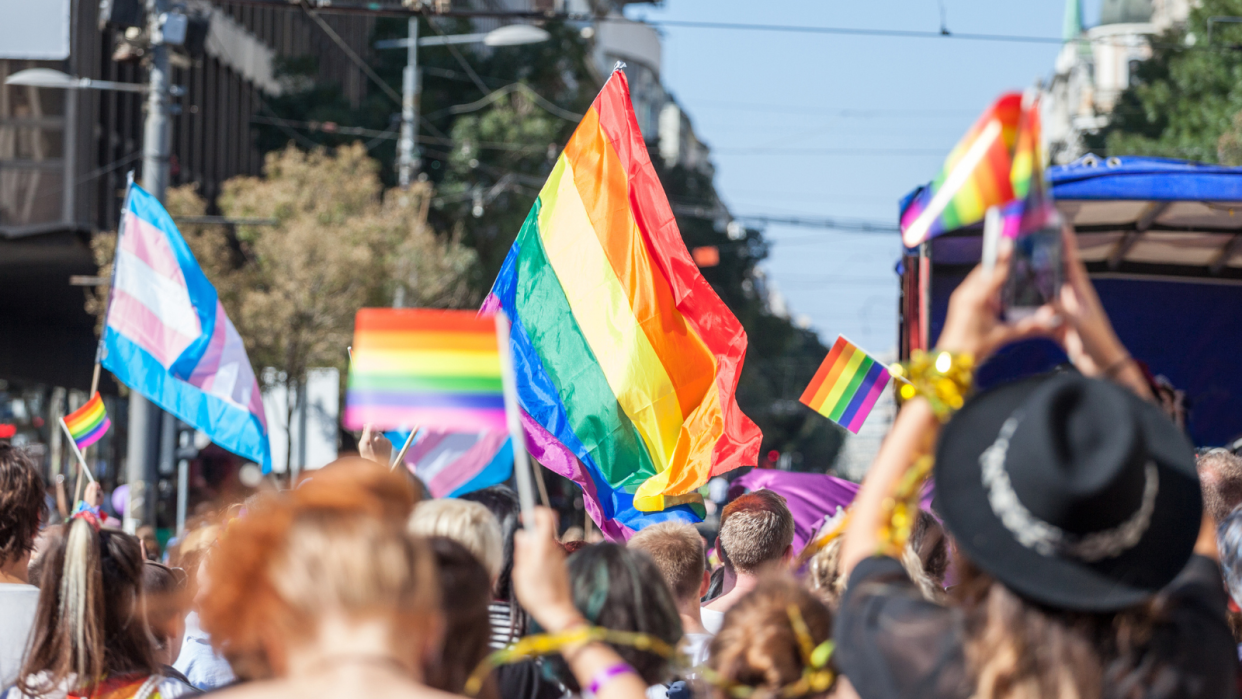
— Recommendations are independently chosen by Reviewed’s editors. Purchases you make through the links below may earn us and our publishing partners a commission.
Every June, Pride Month brings about many celebrations and parades to show support for the LGBTQ+ community. If you've ever been to a Pride parade, you have doubtlessly come across the various flags that represent the identities of the LGBTQ+ community. Wondering the meaning behind certain patterns you've come across? We’re here to give you a primer on what the cool flags you’ve seen mean and where you can shop for Pride flags that are relevant to you. There are a lot of LGBTQ+ flags out there and we do mean a lot, so we’ve stuck to the most popular variations of flags.
Make smart choices without hours of googling. Subscribe to The Checklist newsletter for expert product advice and recommendations.
When is Pride Month 2023?
Pride Month occurs every June. It’s held in June to commemorate the Stonewall Riots, a pivotal event in the fight for Gay Rights, which occurred on June 28, 1969.
What is Pride Month?
Pride Month is a month dedicated to celebrating the queer community. During Pride Month, many Pride parades are held across the nation as a way to highlight the community and support their rights
Pride flag
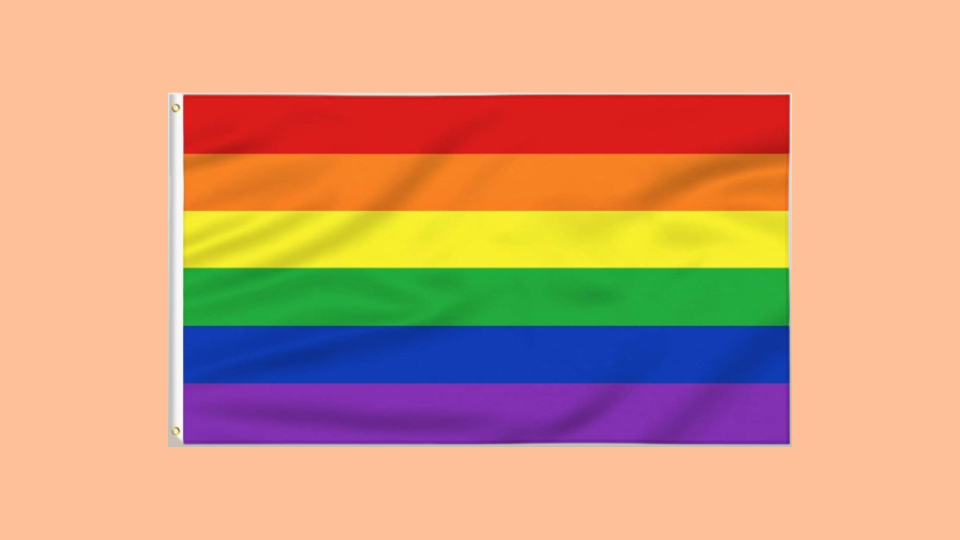
The Pride flag is the most famous and recognized of the LGBTQ+ flags, if not flags in general. Created by Gilbert Baker, it is meant to represent the entire queer community. Originally, the flag featured eight stripes—pink, red, orange, yellow, green, turquoise, indigo and violet. Soon after it was made, pink would be dropped and indigo and turquoise would be replaced with blue to make the six-stripe flag that is famous today.
Progress flag
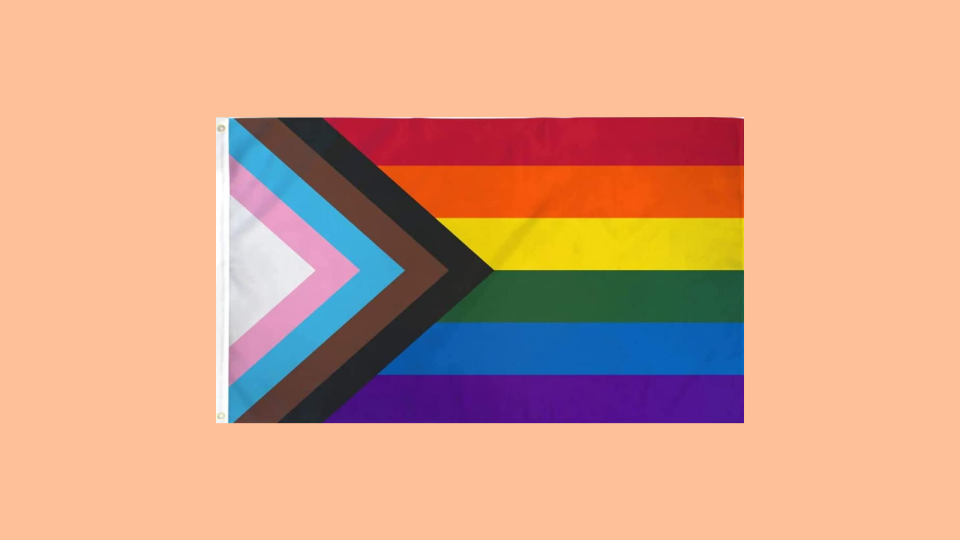
In recent years, Daniel Quasar’s Pride Flag, commonly referred to as the Progress flag, has gained traction. This flag features the six-stripe rainbow along with a chevron featuring black, brown, blue, and pink bands to highlight LGBTQ+ people of color as well as the trans community.
Bisexual flag
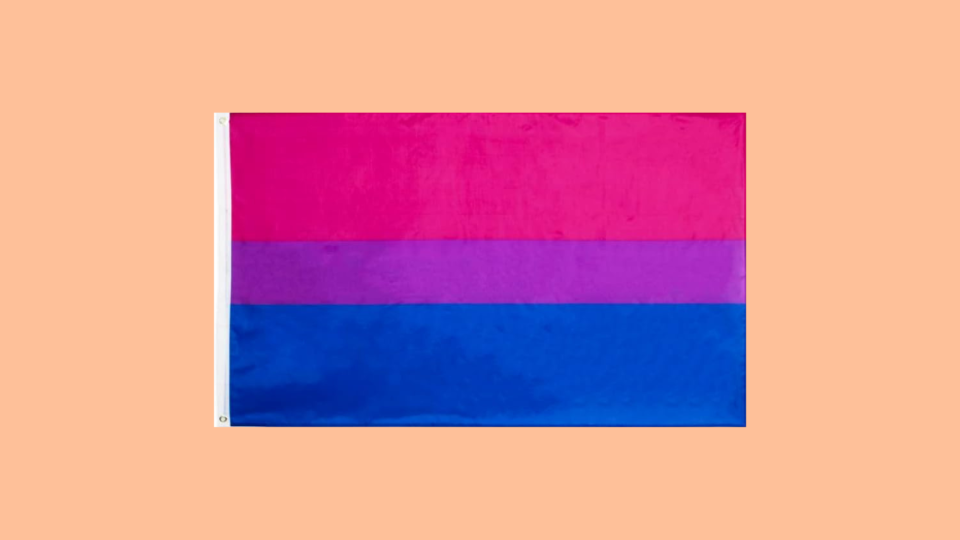
Bisexuality generally refers to individuals who are attracted to both men and women. The flag consists of pink, purple and blue stripes.
Transgender flag
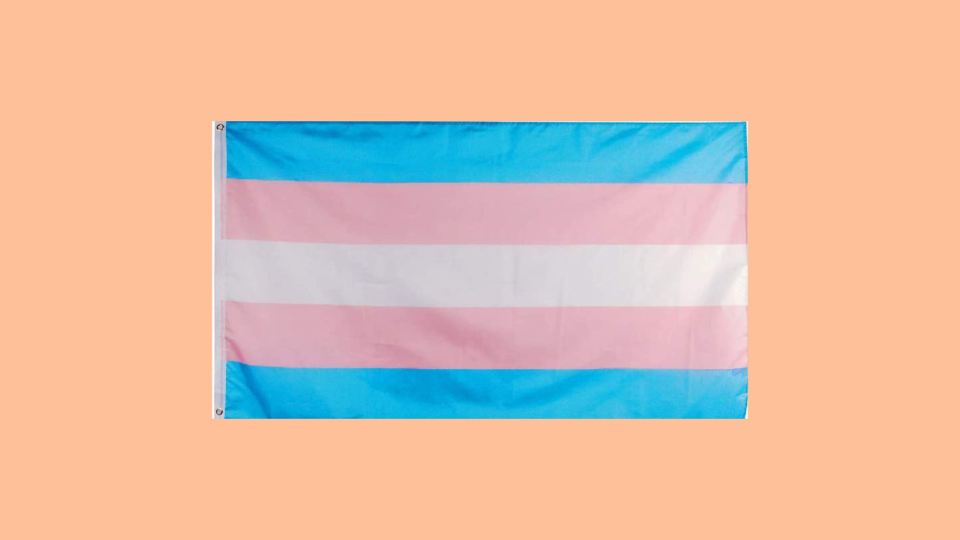
Transgender refers to people whose gender identity doesn’t match the sex they were assigned at birth. The trans flag is one of the more well-known LGBTQ+ flags and consists of a white stripe in the middle along with symmetrical pink and blue stripes.
Intersex flag
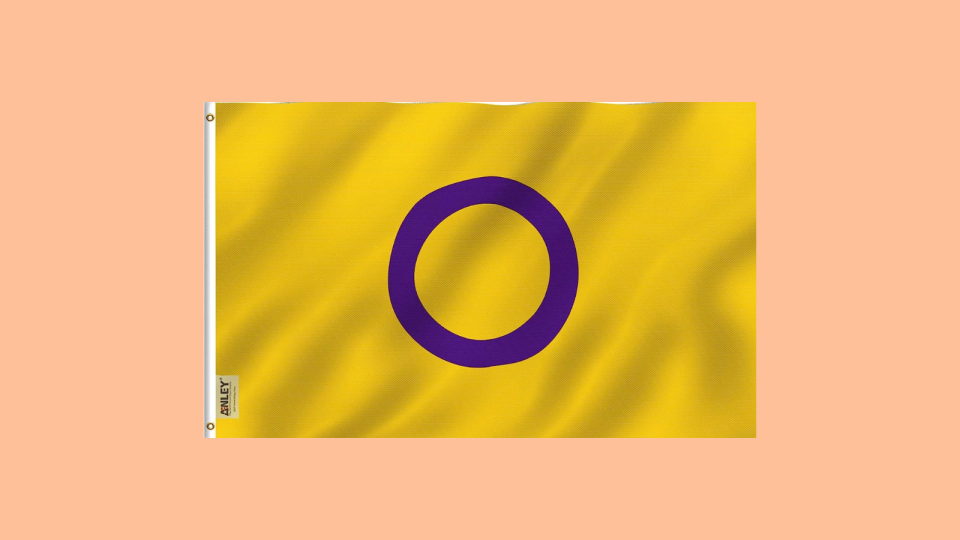
Intersex refers to those whose biological sex does not fit the male/female binary. The intersex flag consists of an open purple circle in the middle of a yellow background.
Pansexual flag
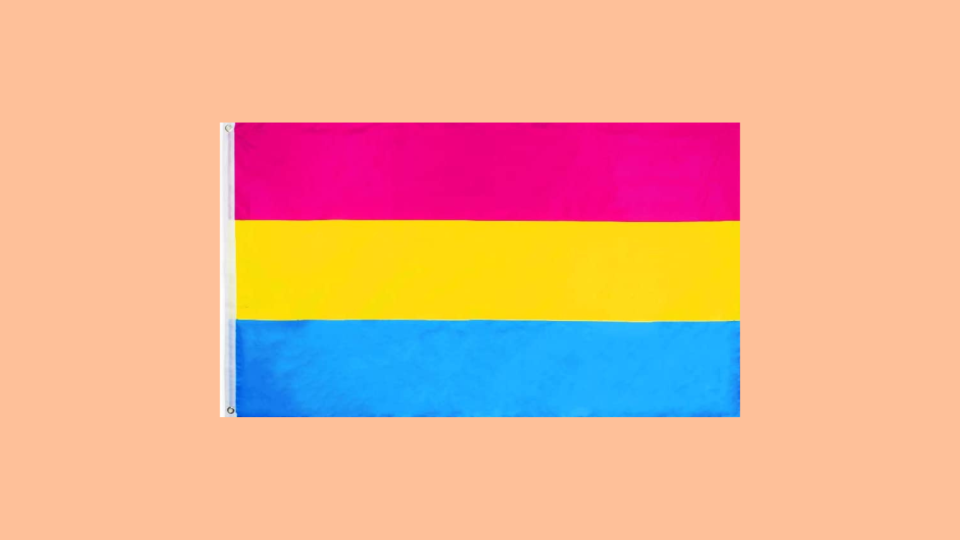
Pansexuality refers to attraction to others regardless of gender identity. While it’s sometimes used interchangeably with bisexuality, as some believe bisexuality to only encompass attraction for the two “traditional genders,” pansexuality is distinguished by including all gender expressions, such as gender-fluid. The flag consists of pink, yellow and blue stripes.
Gynosexual flag
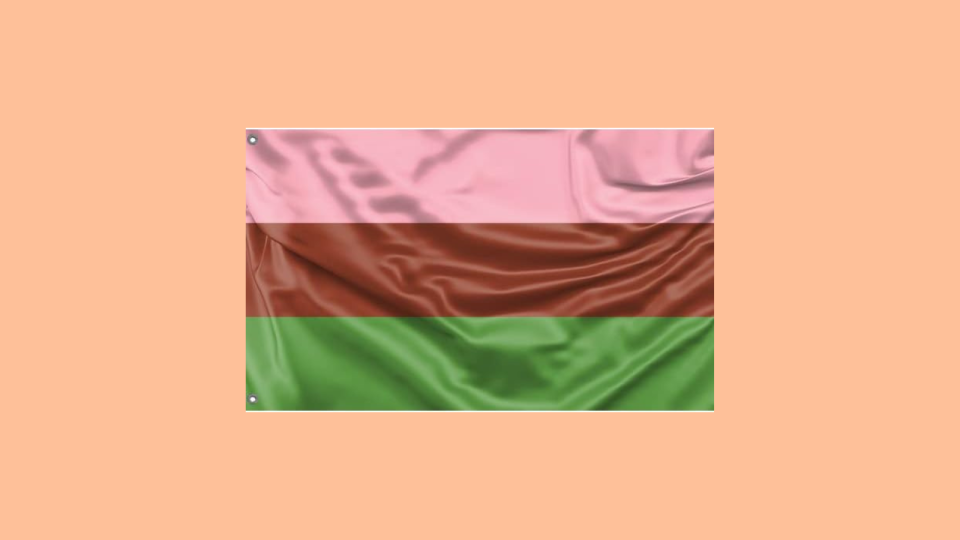
Gynosexuality, also spelled gynesexuality, and sometimes referred to as finsexuality, is defined as being attracted to femininity, regardless of gender identity. Its flag is comprised of pink, brown and green bands.
Androsexual flag
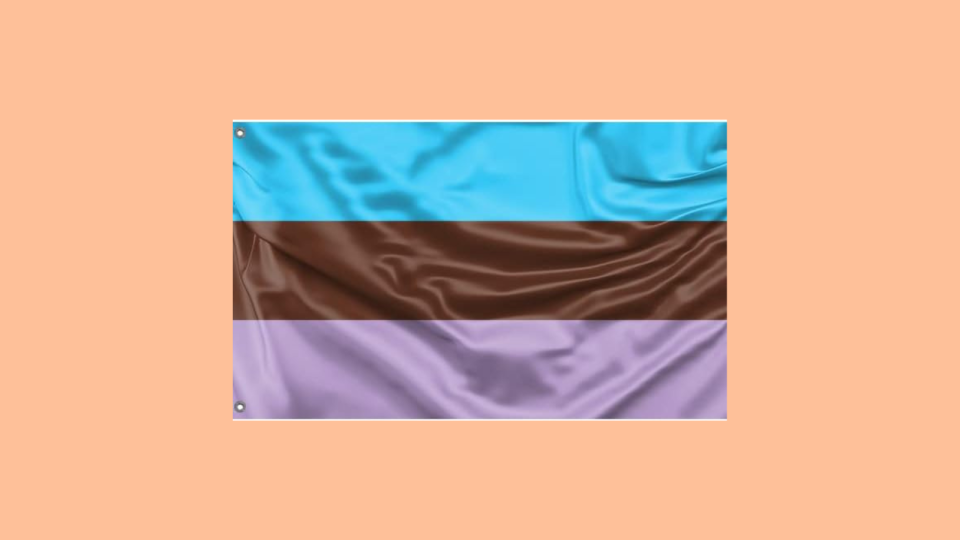
Androsexuality is an attraction to masculinity, regardless of gender identity. The flag consists of blue, brown and purple stripes.
Lesbian flag
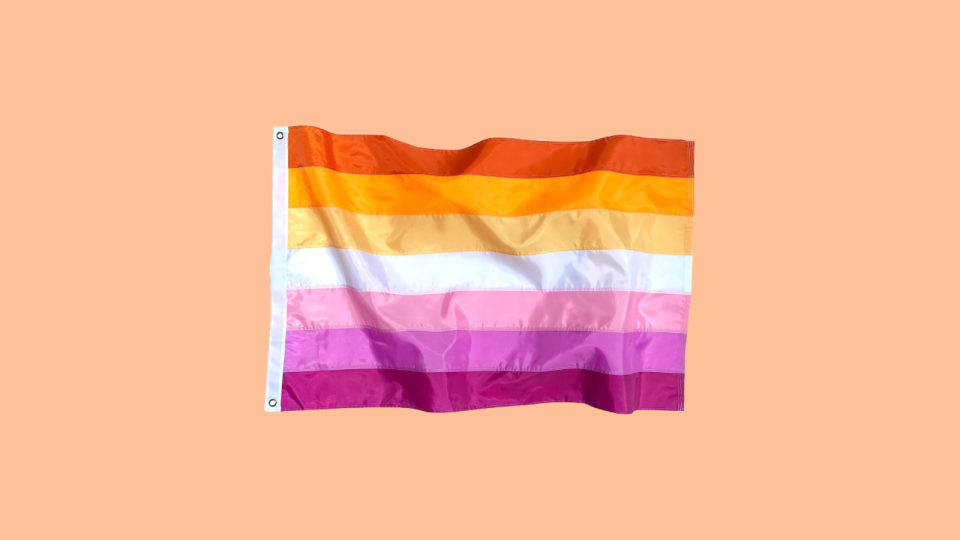
Lesbians are women who are attracted to other women. Originally consisting of solely horizontal pink stripes, many have adopted a more recent flag that incorporates shades of orange to be more inclusive toward women who aren’t traditionally feminine.
Gay flag
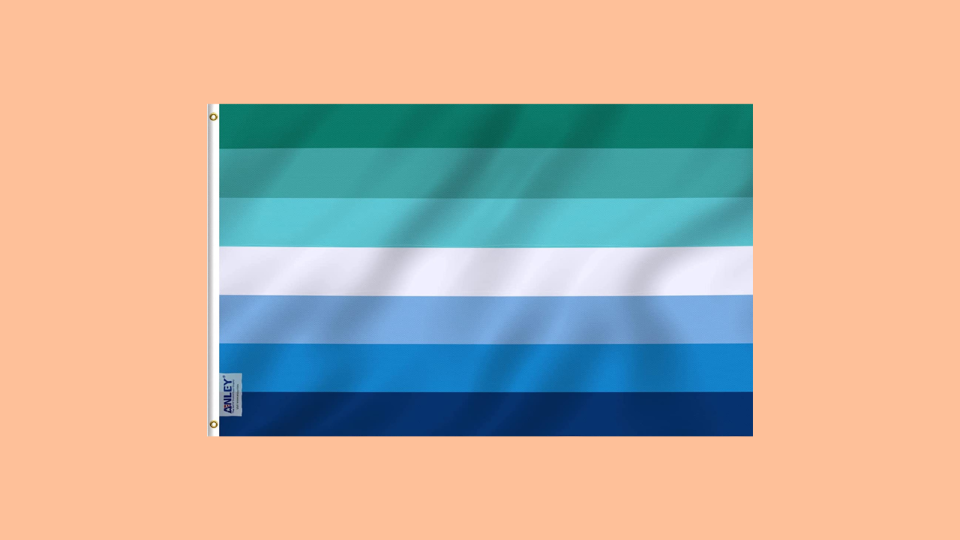
While “gay” is often used as a catchall term for the entire LGBTQ+ community, it technically refers to men who are attracted to other men. MLM or “men-loving-men” is a synonymous term. The MLM flag was created recently to give MLM their own flag distinct from the general Pride flag. It is meant to mirror the lesbian flag and consists of a gradient of blue stripes as well as a white stripe.
Asexual flag
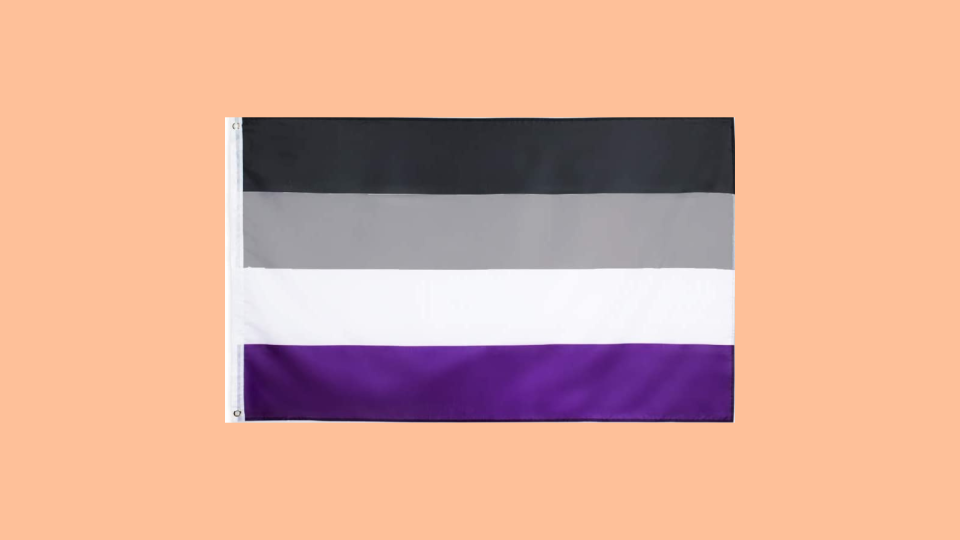
While asexuality typically refers to those who do not feel sexual attraction at all, the label is also used as an umbrella term to represent those who only experience attraction in very specific circumstances. This can be seen in the flag's colors, with black representing complete asexuality while gray represents gray asexuality and demisexuality.
Gray-asexual flag
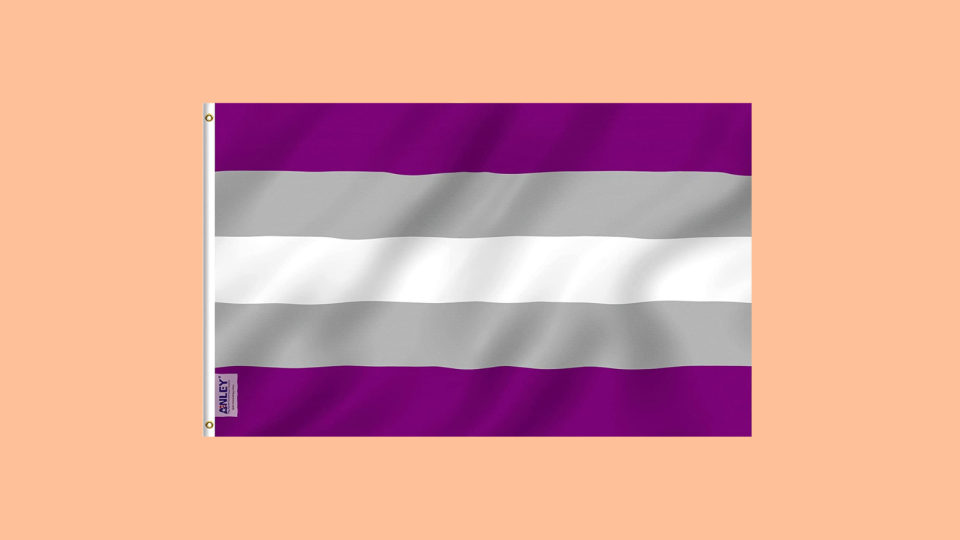
Gray asexuality refers to the spectrum that comprises complete asexuality and allosexuality (attraction to others). The gray-ace flag is comprised of purple, gray and white stripes.
Aromantic flag
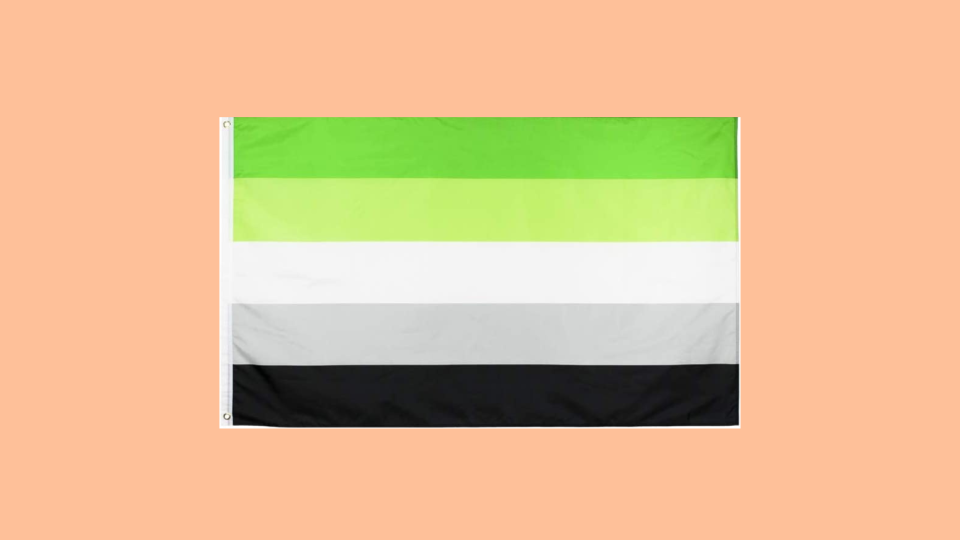
Aromantic, often shortened to “aro,” refers to feeling little-to-no romantic attraction to others. The aromantic flag consists of dark green, light green, white, gray and black stripes.
Aroace flag
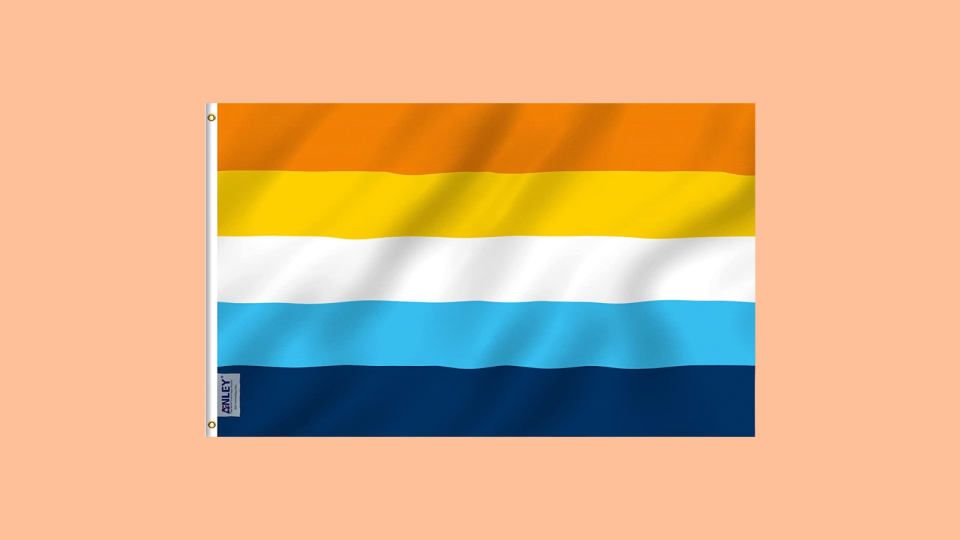
Aromantic-asexual or “aroace” refers to those who are both aromantic and asexual. The aroace flag is comprised of orange, yellow, white, light blue and dark blue stripes.
Demisexual flag
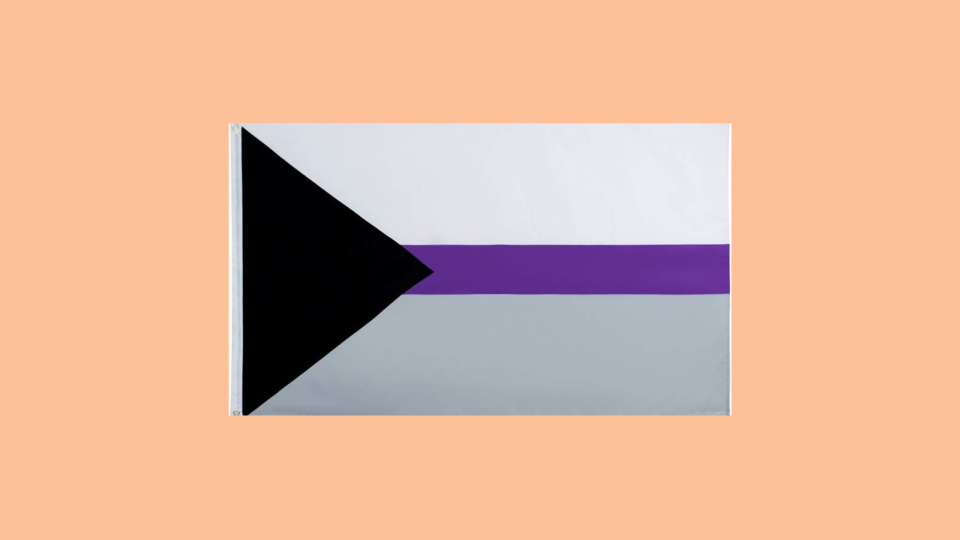
Demisexuality is often classified as a form of asexuality and is defined as only being attracted to those one has formed an emotional connection. The flag sports the same colors as the asexual flag, but a black chevron and white, purple and gray stripes.
Sapiosexual flag
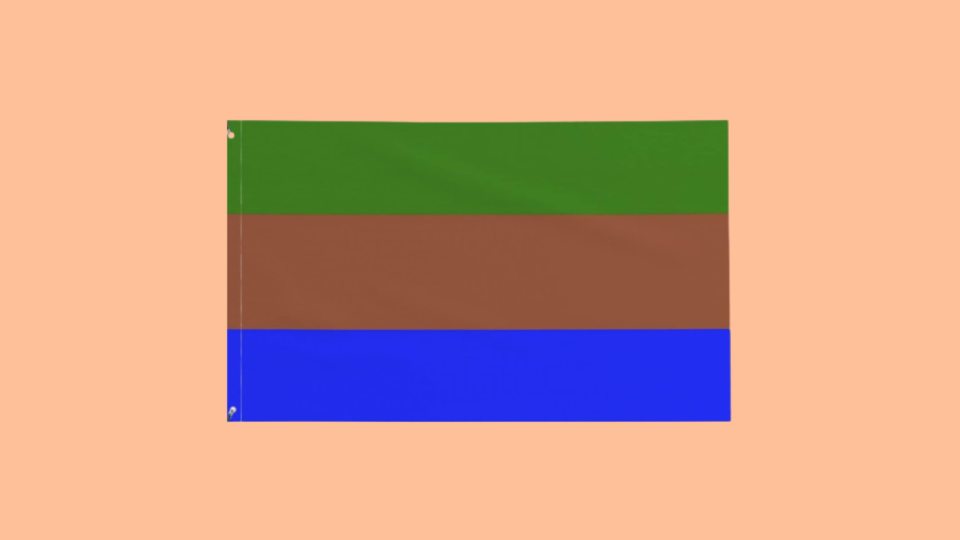
Sapiosexuality, wherein attraction is derived from intelligence rather than physical traits, is sometimes categorized as a form of asexuality. Its flag consists of green, brown and dark blue lines.
Gender identity flags
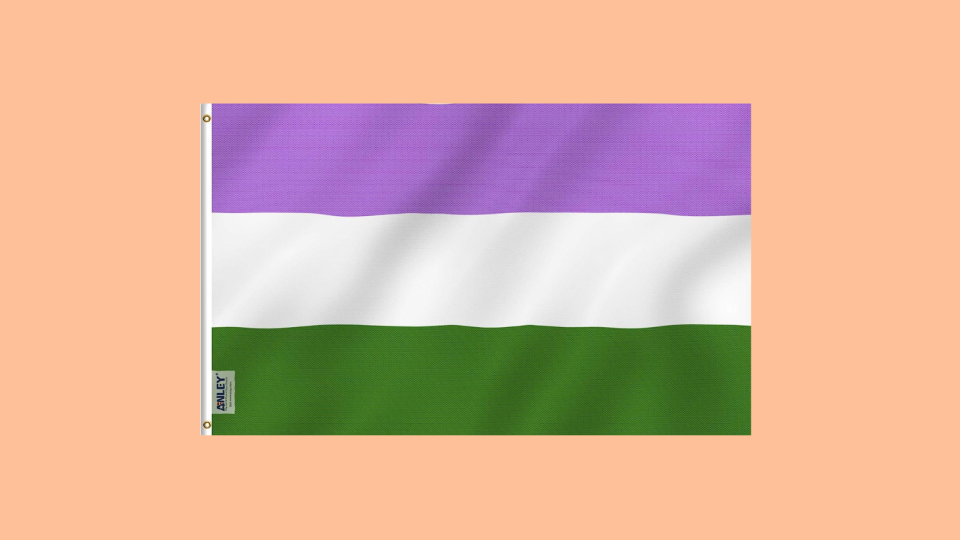
Beyond the trans flag, there are several other flags relating to gender identity. Genderqueer and nonbinary are often used interchangeably and are umbrella terms for individuals who express their gender in a way that’s distinct from the man/woman binary that many see as “standard.” Genderfluid refers to people who express themselves via more than one gender. The genderqueer flag consists of purple, white and green stripes. The nonbinary flag is comprised of yellow, white, purple and black stripes. The genderfluid flag consists of pink, white, purple, black and blue stripes.
Two-Spirit flag
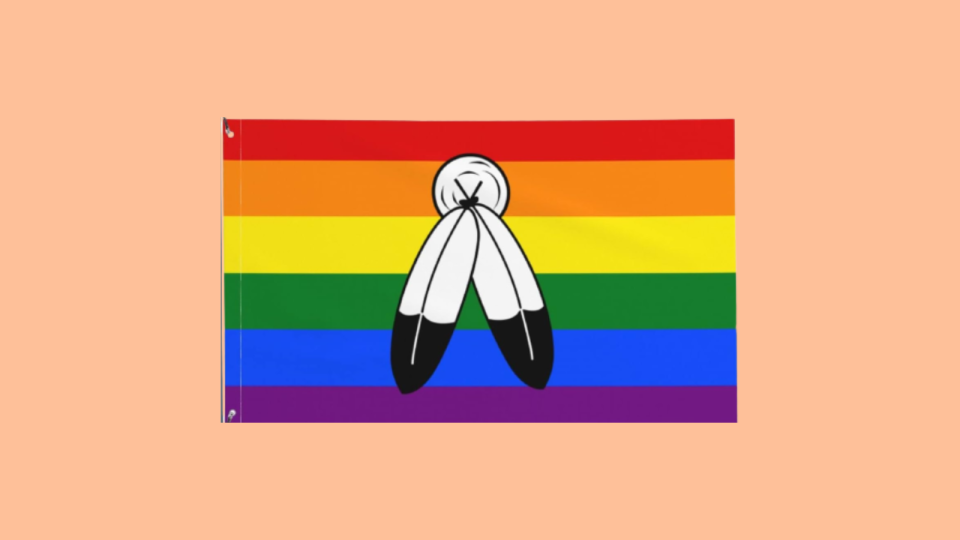
Two-Spirit is a non-binary gender identity found in many Indigenous-American cultures. The most common Two-Spirit flag is comprised of two black and white feathers crossed over from a white circle against the Pride flag.
More: What does 'Two-Spirit' mean? What to know about Two-Spirit, indigenous LGBTQ identities
Polyamory flag
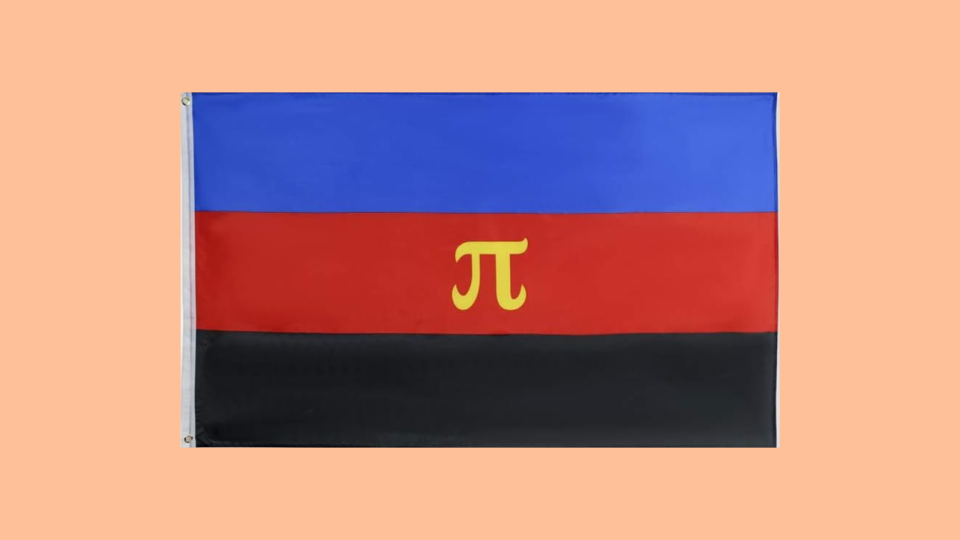
Polyamory, often referred to as “ethical non-monogamy” refers to the practice of having multiple sexual or romantic partners, wherein all parties are knowledgeable of the arrangement. The original polyamory flag, created via Windows Paint in 1995 by Jim Evans, consists of blue, red and black bands with a golden “pi” symbol in the middle band. Many members of the community voted on a new polyamory flag consisting of a golden heart in a white chevron along with blue, pink and purple stripes.
Straight ally flag
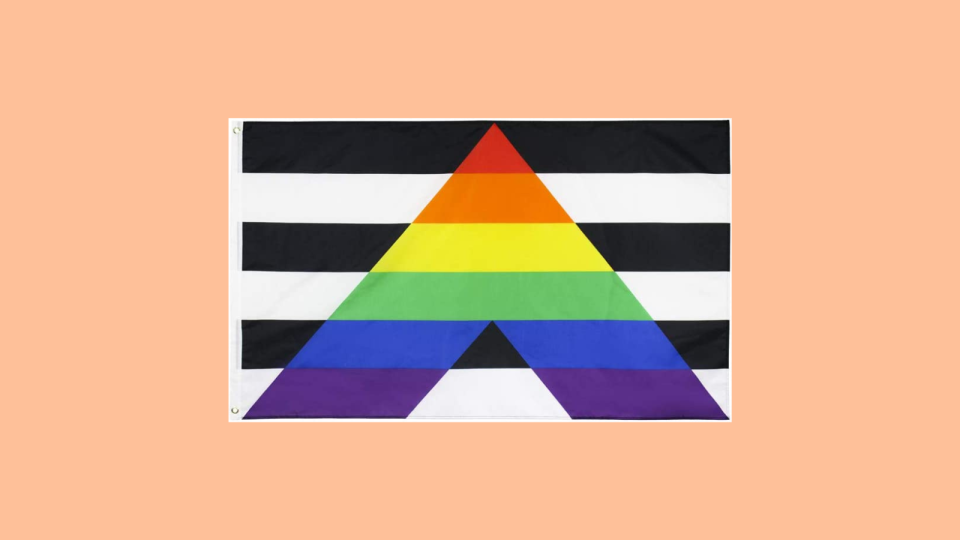
Straight allies are heterosexual, cisgender, monogamous and allosexual individuals who stand by and support the queer community. The flag is comprised of a triangular strip of the Pride flag overlaid over straight flag, which is a series of alternating black and white stripes.
The product experts at Reviewed have all your shopping needs covered. Follow Reviewed on Facebook, Twitter, Instagram, TikTok or Flipboard for the latest deals, product reviews and more.
Prices were accurate at the time this article was published but may change over time.
This article originally appeared on Reviewed: Pride Parade 2023: What Gay Pride flag designs mean

